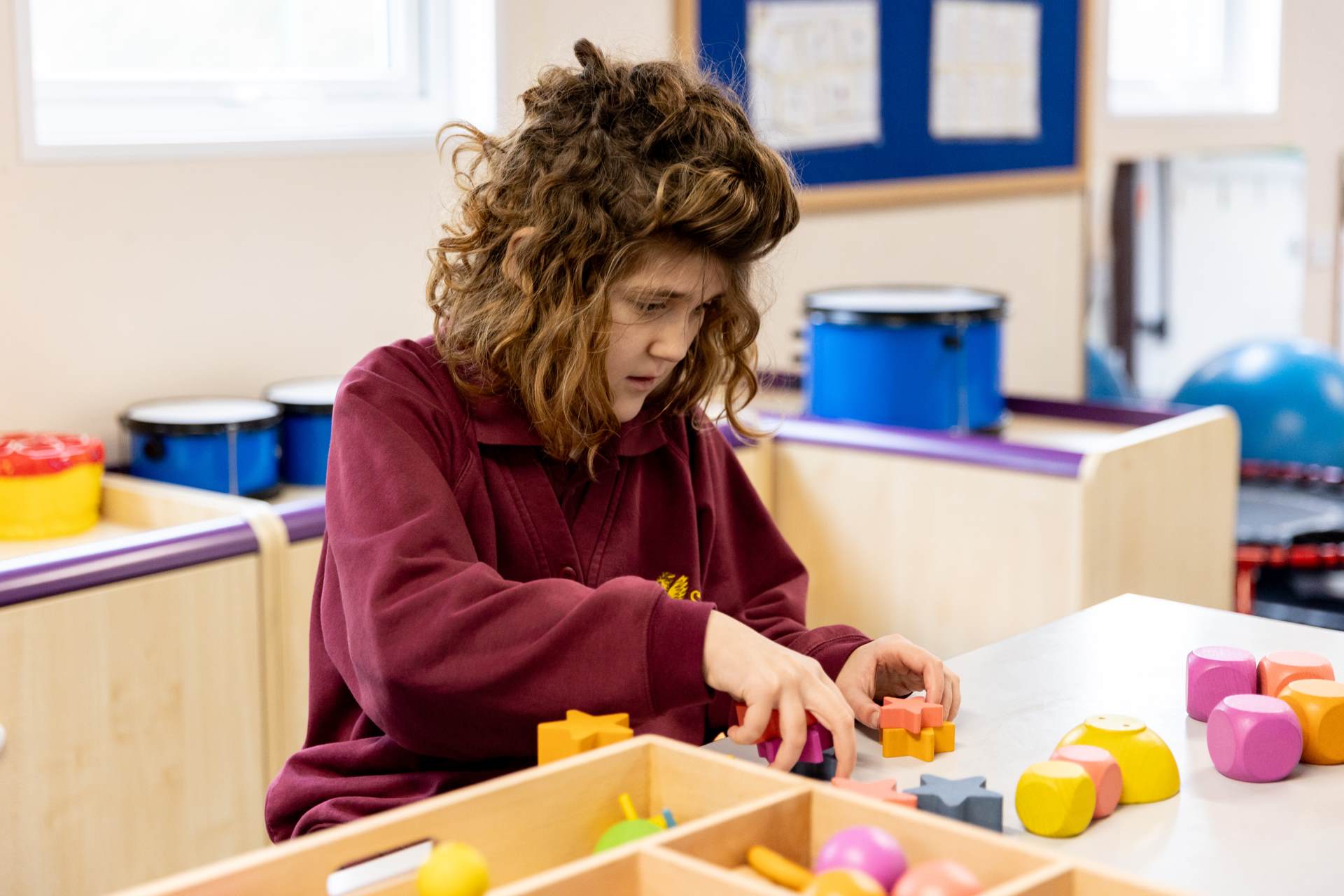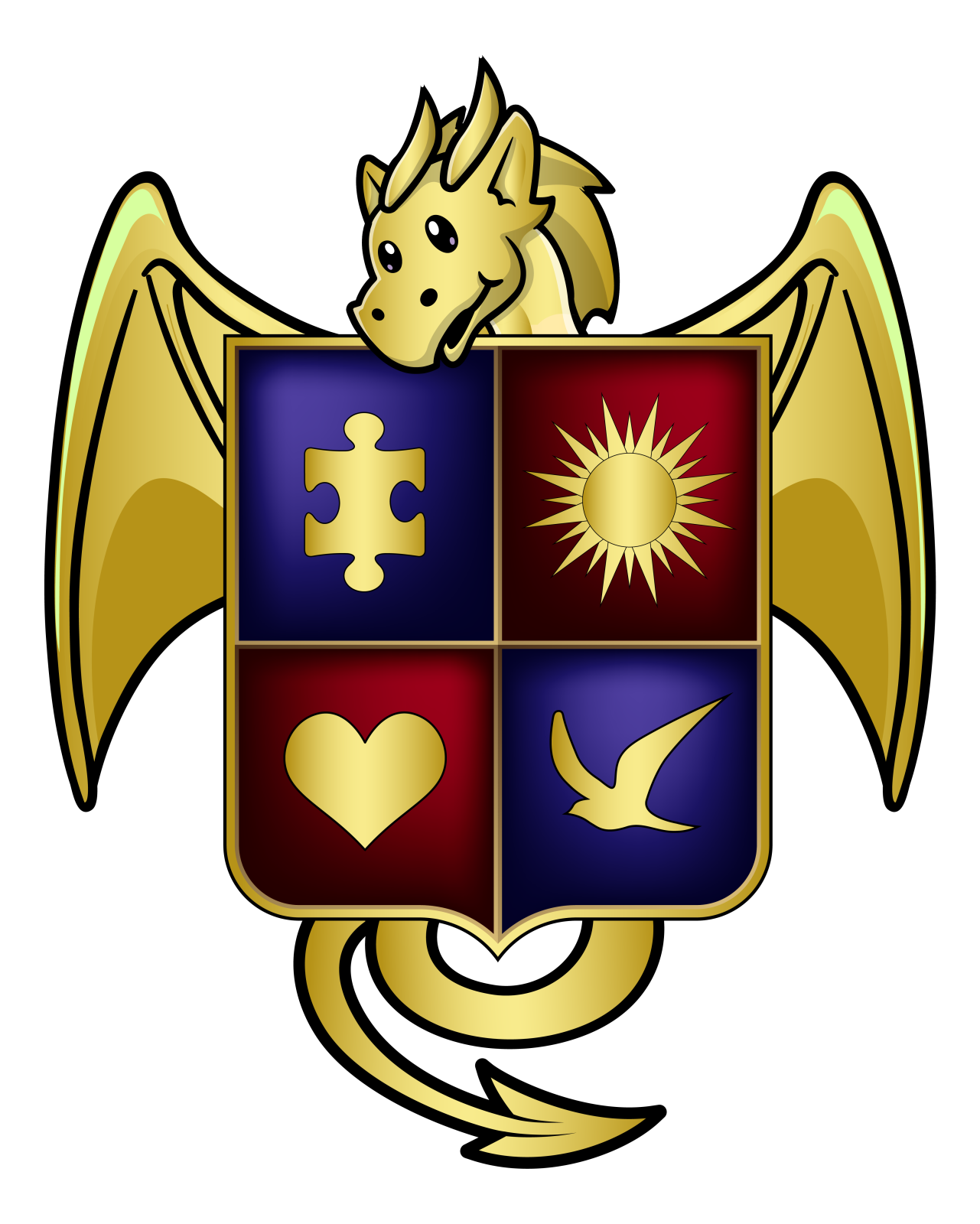Secondary Sensory Pathway

Who the learners are:
The learners within this pathway consist of mixed classes aged between 10 and 16. The learners have severe learning difficulties, and may have a diagnosis of autism. The learners benefit from a multi-sensory approach to their learning and have their own individual needs addressed and met on a daily basis. A bespoke curriculum is implemented for every learner, so they are able to reach their potential in all areas of their EHCP, engagement, well-being and the sensory curriculum.
Sensory life skills learners need a very individualised approach. They need a high level of support with communication, sensory regulation, emotional regulation and with managing their own behaviour. Our sensory learners tend to need a high level of support to ensure they are ready for transition and their adult setting post-school.
Size of classes:
There is a maximum of 8 students in each class, to enable staff to create an adaptable and bespoke curriculum for each student.
Classes within the pathway:
|
Class name |
Teacher |
Age range of pupils |
Number of pupils |
|
Snow Leopards |
Jackie Davey Ellie Wiggins-Wilson |
Yr9 – Yr11 |
8 |
|
Orcas |
Joe McLaughlin |
Yr7 – Yr9 |
8 |
|
Polar Bears |
Fran Chapman (Pathway Lead) |
Yr6 – Yr9 |
8 |
Students are ready to join our pathway when:
Students usually join from the primary sensory pathway, although some may come from STEPS or Inspire. They will still require a multi-sensory approach to their learning with specific focus on engagement, regulation strategies, well-being, and communication development. The secondary sensory pathway builds on the foundations from primary and helps the pupils embed these skills through the bespoke sensory curriculum. They will need to secure their communication, with hands on 1:1 practical approach to learning.
What being prepared for adult life means in our pathway:
For all students to develop their skills so they be as independent in life as possible, for many of the learners in the pathway this will not mean full independence, so there is a focus on ensuring students are able to communicate using a functional communication system. Students have access to appropriate careers guidance to enable planning to take place ready for post 16.
We know students are ready to move on to the next pathway when:
Students will move to the post 16 preparing for adulthood curriculum when they finish year 11. If they are ready to engage in more formalised learning approaches, they can move into the early thematic pathway.
Intent
A sensory approach to the curriculum provides the basis for work in all areas of the curriculum and should not be viewed in isolation. The aim of a sensory approach learning is to meet the individual needs of the student and is underpinned by their EHCP targets and the objectives within the sensory curriculum.
The pupils within the Secondary Sensory Life Skills Pathway see and experience the world in a sensory way, using their senses to widen their knowledge and experiences. The Secondary sensory life-skills pathway is a highly specialised approach to learning; adopting a personalised curriculum, focusing on pupil’s communication, self-regulation, social-emotional skills and opportunities to develop their independence.
The Secondary Sensory Life-skills Pathway offers a personalised curriculum that is available to all children. The curriculum approach allows us to consider pupil’s sensory difficulties and personalise their learning to allow them to access learning activities and avoid situations that can cause them distress and discomfort. Addressing sensory issues will result in increased engagement with the curriculum and therefore enhance learning experiences.
The sensory life-skills pathway allows us to provide opportunities throughout the day for children to work on their personalised targets in a variety of multi-sensory approaches and make the most of the school environment. Learning opportunities are highly motivating to allow pupils to widen their experience, develop their skills in all areas of the curriculum with a strong focus on communication, social skills, independence, and building relationships.
Learning areas covered: Reading and pre-reading skills, English, Maths, Communication, Music, Art, PSHRSE, PE, RE, Play, Intensive interaction, Cooking, Tac Pac, Rebound, Sensory Play.
Learning time allocation:
Mornings consist of English (45 minutes) Maths (30 minutes), communication is built into all sessions. There is also time in the morning for students to develop play skills.
Afternoons consist of 3 sessions of either Music, Art, PSHRSE, PE, RE, Play, Intensive interaction, Cooking, Tac Pac, Rebound, Sensory Play.
Learning objectives for each area of learning:
The learning objectives are taken from the Wyvern Frameworks for Reading, Writing, Maths, Communication, Engagement model, Progression documents for PE, Art, RE. The pathway use the Secondary life skills progression framework to set individualised objectives. Due to the profile of the sensory pupils learning objectives are individualised, and lessons are adapted in different ways to accommodate the student’s learning need in each session.
Topic Cycles:
|
|
Term 1 |
Term 2 |
Term 3 |
Term 4 |
Term 5 |
Term 6 |
|
Cycle A |
Nature |
Seasonal Stories |
Caribbean |
Heroes |
Putting on a show |
People I need to know |
|
Cycle B |
Cycles and Patterns |
Cities and Buildings |
India |
Habitats |
Drama and Play |
The Farm |
|
Cycle C |
My Favourite films |
Africa |
Winter |
Space |
Exploring Art |
The Sea |
|
Cycle D |
My Favourite Places |
Celebrations |
Great Britain |
Transport |
Outdoor Art |
Houses and Homes |
|
Cycle E |
Music, Film and TV |
European Celebrations |
Petr Horaceks books |
Ready Steady Cook! |
Secondary Shakespeare Company |
Going on an adventure |
Please click on the link below to see an example of our time table
Implementation:
What are the approaches to learning?
At the Wyvern school we offer a range of approaches to support learning. We use a holistic approach to establishing a child’s needs and consider approaches appropriate to their age and stage of development. All staff are highly trained in delivering positive outcomes for children at the early stages of development.
In the sensory life skills pathway we believe that the child is at the centre of learning and should be given the tools to explore their environment with adults providing meaningful experiences that scaffold and build learning based on prior experiences and their own curiosity. Adults are led by the children’s interests and motivations in order to plan experiences within the classroom environment.
Play based learning is known to support social, emotional and behavioural development in children. However, research also suggests it has an impact on cognitive development also where adults provide children with meaningful opportunities that are designed with intention by an adult. Adults are attentive and responsive to children using their knowledge of what a child needs to learn to guide their learning as they play and explore.
Approaches used to support learning:
Approaches used to support learning
Learning environment set up
Pupils within the sensory life-skills pathway are immersed in a multi-sensory environment, which enhances their learning experiences. Multi-sensory teaching is a way of teaching that engages more than one sense at a time. Using sight, hearing, movement and touch gives pupils more than one way to connect with what they are learning. Multi-sensory teaching stimulates the brain in a variety of ways so that each sensory system becomes more developed and higher functioning.
Multi-sensory learning is beneficial to all students because when they engage with something using more than one sense it forms more connections related to memory and is therefore more likely to be remembered.
Within each classroom there are key areas for reading, regulation, independence and learning. The areas are inviting, engaging and language enriched. They are designed to be confidence boosting enabling students to become as independent as possible. Classroom displays should be functional and meaningful for students.
Impact:
Assessment:
Secondary Sensory Life-skills pathway uses a variety of assessment methods to assess each pupil’s learning. We ensure planning covers all areas of their EHCP targets alongside topic areas within the sensory curriculum.
We use the Wyvern Communication milestones, Reading, Writing and Maths framework alongside the sensory life skills curriculum framework, (appendix 1).
Class teams document the activities the pupils participate in to support and provide evidence of each pupil’s progress in their individual targets and objectives.
What being prepared for adult life means in our pathway:
For all children to develop their skills so they be as independent in life as possible, for many of the learners in the pathway this will not mean full independence, so there is a focus on ensuring students are able to communicate using a functional communication system. Children have access to appropriate careers guidance to enable planning to take place ready for post 16.
We know students are ready to move on to the next pathway when:
Students will move to the post 16 preparing for adulthood curriculum when they finish year 11. If they are ready to engage in more formalised learning approaches they can move into the early thematic pathway.
Reading:
Secondary sensory reading guarantees:
1:1 sharing or reading materials – an inviting book corner, daily opportunities to read with an adult. Meaningful, relevant and engaging texts.
Adults reading to students – daily story times, looking at class books, fostering a love of reading.
Teaching pre reading skills – daily looking at books, answering simple questions, building of attention through varied learning opportunities, recognise meaningful words to them, finding and developing a meaningful form of communication.
Fresh Start Phonics programme – daily sessions to develop phonics knowledge and build on reading confidence where appropriate.
Reading books sent home weekly – each class sends home books weekly for children to share with an adult.
Sensory Maths guarantees:
Maths is taught using a multi-sensory approach based on mastery, a teaching and learning approach that aims for pupils to develop deep understanding of maths rather than being able to memorise key procedures. To achieve this all maths is designed to be purposeful and functional using a Concrete Pictorial Abstract approach. Building the foundations of understanding number is key to the development of maths and development of understanding. This approach is supported by the White Rose Maths programme, Maths for Life, and Numicon resources.

